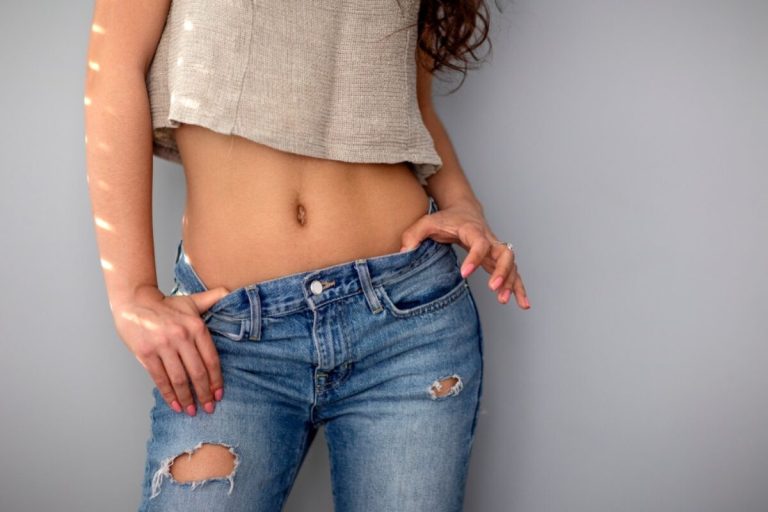Cheek Contouring Choices: Weighing Perioral Liposuction vs. Buccal Fat Removal Options
Posted on: April 8, 2024
Defining Procedures
Buccal Fat Removal
Buccal fat removal, a treatment targeting the buccal fat pad in the cheeks’ soft tissue, enhances facial appearance from corner to corner. Surgeons perform this buccal fat pad removal procedure to thin out overly full cheeks by removing superficial fat and soft tissue, creating a more contoured facial profile as a treatment. It involves a small incision inside the mouth, through which the soft tissue fat pad is extracted as part of the treatment process to enhance facial appearance.
This buccal fat pad removal surgery suits those seeking a permanent reduction of cheek volume by targeting the superficial fat, enhancing facial appearance through the adjustment of soft tissue. It can significantly enhance facial contours, leading to a sharper jawline, more pronounced cheekbones, and reduced superficial fat. The results boost self-confidence by aligning one’s appearance with their aesthetic goals.
Cheek Liposuction
Cheek liposuction, on the other hand, focuses on removing excess fat from the cheeks through suction. It’s less invasive than buccal fat removal and offers a subtler change. This technique is ideal for individuals looking to eliminate localized fat deposits without drastically altering their facial structure.
Cheek liposuction can also refine facial features and improve balance among facial elements. Its recovery time is generally shorter, making it a popular choice for those with busy lifestyles.
Comparing Techniques
Buccal Incision
Buccal fat removal targets the fat pads in the cheeks. Surgeons make incisions inside the mouth, near the second upper molar. This approach ensures no visible scars remain on the face. They then apply pressure outside the cheek to expose the buccal fat pad, making it easier to remove.
This procedure is precise, aiming to reduce volume in the lower cheeks. It’s ideal for those seeking a more defined facial structure without altering the soft tissue around other features.
Cheek Liposuction
Cheek liposuction, on the other hand, offers a broader target area. It focuses on reducing fatty tissue under the cheekbone and along the jawline. The incisions are tiny and strategically placed to minimize visibility.
This technique allows for significant reshaping of the face by removing excess fat from larger areas. It can dramatically enhance facial contours and is often used in combination with other procedures to achieve balanced results.
Post-Surgery Care
Both techniques emphasize balanced results and patient satisfaction. However, they differ in post-surgery care instructions due to their distinct approaches.
Buccal fat removal patients must follow strict oral hygiene practices to prevent infection. Meanwhile, cheek liposuction requires wearing compression garments to help shape the treated area during healing.
Understanding these differences helps patients choose which procedure aligns with their aesthetic goals and lifestyle.
Ideal Candidate Profiles
Buccal Fat Removal
Ideal candidates for buccal fat removal are those who seek a more defined facial contour but find that even with diet and exercise, the fullness in their cheeks remains. These individuals often have extra cheek fat that contributes to a rounder face shape. Moreover, having good skin elasticity is crucial. It ensures the skin can conform to the new facial contours post-procedure, avoiding sagging or an unnatural appearance.
Buccal fat removal suits people desiring a permanent solution to achieve a chiseled look. However, they must understand the risks involved and be committed to following post-operative care instructions.
Cheek Liposuction
Candidates for cheek liposuction typically aim for subtle contouring rather than dramatic changes. They might have localized fat deposits on their cheeks that do not respond well to weight loss efforts. This procedure is best for those looking to enhance cheek definition and achieve a slimmer facial appearance.
Like buccal fat removal, candidates should possess good skin elasticity to adapt smoothly to reduced facial volume. They must also be aware of the risks and ready to maintain their health post-procedure for lasting results.
Both procedures require candidates to have realistic expectations about what cosmetic surgery can achieve. It’s essential they consult with a qualified surgeon to discuss their goals and ensure either option aligns with their desired outcome.
Risk Overview
Common Complications
Both perioral liposuction and buccal fat removal carry risks. Pain, scarring, and infection are among the most common complications. These issues can arise despite the procedure’s success.
Proper postoperative care is crucial. It helps minimize these common complications. Patients must follow their surgeon’s instructions closely.
Serious Risks
More serious complications can occur if postoperative instructions are not followed. These include nerve damage and asymmetry. Such outcomes can significantly impact the patient’s appearance and well-being.
Choosing a surgeon with expertise and board certification reduces these risks. They have the knowledge to handle complex situations.
Specific Risks and Complications
Buccal Fat Risks
Buccal fat removal, focusing on the superficial fat pad inside the cheek, poses unique risks. Patients might experience uneven facial contours post-surgery. This asymmetry can be noticeable and challenging to correct. There’s a risk of nerve damage during the procedure. Such damage can lead to temporary or permanent facial numbness or weakness.
Surgeons must navigate near several facial nerves. Their expertise is crucial in minimizing these risks. Despite precautions, however, complications can occur.
Liposuction Concerns
Cheek liposuction targets fat closer to the skin’s surface and carries its own set of complications. Skin unevenness is a common concern among patients. This issue arises when fat is not removed uniformly, leading to a bumpy or wavy appearance.
Another complication is numbness in the treated area. While often temporary, it can last for months. The procedure’s nature means surgeons must balance aggressive fat removal with preserving skin integrity and sensation.
Comparison Insights
Both procedures offer distinct benefits but come with different complication profiles. Buccal fat removal’s risks largely relate to internal structures, like nerve damage or asymmetry due to deep tissue manipulation. In contrast, cheek liposuction concerns are more about surface-level issues such as skin unevenness and numbness.
Understanding these differences helps patients make informed decisions based on their cosmetic goals and tolerance for specific risks.
Recovery and Downtime Insights
Healing Timeline
The healing process for buccal fat removal typically presents a shorter recovery time. Most patients experience minimal discomfort and can return to normal activities within a few days. This contrasts with cheek liposuction, where the recovery period extends over several weeks.
Patients undergoing cheek liposuction often report a more pronounced swelling and bruising. This necessitates a longer downtime before they feel comfortable appearing in public or returning to work.
Post-Procedure Care
After cheek liposuction, wearing compression garments becomes essential. These garments help reduce swelling and support the healing tissues. Patients are advised to wear them for up to three weeks post-surgery.
Reducing physical activity is crucial during this period. It aids in minimizing swelling and prevents any complications from arising. Following these guidelines ensures a smoother recovery phase.
Surgeon’s Instructions
Adhering to the surgeon’s care instructions is vital for both procedures. It significantly impacts the speed and quality of recovery. Surgeons provide detailed guidelines on how to care for the surgical site, manage discomfort, and when to resume normal activities.
For buccal fat removal, the instructions might include oral hygiene practices to prevent infection. Cheek liposuction patients may receive advice on managing swelling with cold compresses and optimal garment use.

Post-Procedure Care Tips
Swelling Management
After undergoing buccal fat pad removal, patients often experience swelling. To manage this, applying ice periodically during the first 48 hours proves beneficial. It’s crucial to avoid direct contact with skin; wrap the ice in a cloth. Moreover, adopting a soft diet can ease discomfort and facilitate healing. Foods like soups, yogurts, and smoothies are ideal choices.
Patients should also sleep with their head elevated for the initial few days. This position helps reduce swelling more effectively.
Compression Garments
Post-perioral liposuction care includes wearing compression garments. These special garments aid in minimizing swelling and shaping the treated area. Patients should wear them as directed by their surgeon, usually for a few weeks.
Gradually resuming physical activities is important too. Start with light walks to promote circulation but avoid strenuous exercises until the surgeon gives the green light.
Follow-Up Appointments
Scheduling follow-up appointments is a critical step in ensuring a smooth recovery process. These visits allow the surgeon to monitor healing progress and address any concerns promptly. They can also provide personalized advice on care routines based on how well one is recovering.
Patients should not hesitate to reach out to their surgeon if they notice unusual symptoms or have questions about their recovery.
Results Longevity
Stable Weight
Maintaining a stable weight is crucial for the longevity of both perioral liposuction and buccal fat removal results. People who keep their weight steady can enjoy the benefits for years. Significant weight gain or loss can alter the look, impacting the outcome adversely.
Healthy Lifestyle
Adopting a healthy lifestyle supports lasting results. Regular exercise and a balanced diet contribute to maintaining the desired outcome. This lifestyle ensures that the fat removal effects stay visible over time.
Aging Process
As people age, natural changes in facial structure and skin elasticity can affect the long-term appearance post-procedure. While both treatments offer long-lasting results, aging may slightly modify the initial look. Consultation with a cosmetic surgeon helps set realistic expectations about these changes.
Surgeon Consultation
A consultation with a cosmetic surgeon is vital before deciding on either procedure. They provide insights on how factors like location of fat and individual health might influence results longevity. Setting realistic expectations regarding permanence is essential for patient satisfaction.
Summary
Choosing between perioral liposuction and buccal fat removal boils down to your specific cosmetic goals and the advice of a trusted professional. You’ve seen how each procedure stands out, from their techniques to recovery insights. Perioral liposuction targets more generalized facial fat, while buccal fat removal offers a solution for those seeking cheek definition. Understanding the risks and knowing what makes an ideal candidate helps you make an informed decision. Remember, results longevity varies, so consider what aligns best with your long-term aesthetic desires.
Your journey towards a refined facial contour starts with selecting the right procedure for you. Consult with a board-certified surgeon who can tailor their approach to your unique facial structure and desired outcomes. Ready to take the next step? Reach out today and begin your path to achieving the look you’ve always wanted.
Frequently Asked Questions
What is the difference between perioral liposuction and buccal fat removal?
Perioral liposuction targets fat around the mouth area, while buccal fat removal specifically eliminates fat pads from inside the cheeks. Both aim for a more contoured face but focus on different facial zones.
Who is an ideal candidate for perioral liposuction or buccal fat removal?
Ideal candidates are individuals in good health seeking to refine their facial contours by reducing specific areas of fat. Those with realistic expectations about the outcomes are best suited for these procedures.
What are the risks associated with perioral liposuction and buccal fat removal?
Common risks include swelling, bruising, and discomfort. Specific risks vary by procedure but can involve nerve damage or asymmetry. It’s crucial to consult with a qualified surgeon to understand your risk profile.
Are there any specific complications to be aware of for these procedures?
Yes, specific complications may include infection, excessive bleeding, or adverse reactions to anesthesia. Perioral liposuction might also pose a risk of skin irregularities, while buccal fat removal could lead to changes in facial expressions.
What does recovery entail for both procedures?
Recovery generally involves rest and limited physical activity. Swelling and bruising are common but subside within weeks. Following your surgeon’s post-procedure care instructions is key to a smooth recovery.
Can you offer any post-procedure care tips?
Keep the treated area clean, apply cold compresses to reduce swelling, and avoid strenuous activities until cleared by your surgeon. Also, follow any prescribed medication regimen closely for optimal healing.
How long do the results of these procedures last?
Results from both perioral liposuction and buccal fat removal are typically long-lasting. Maintaining a stable weight and healthy lifestyle can help preserve the outcomes indefinitely.





